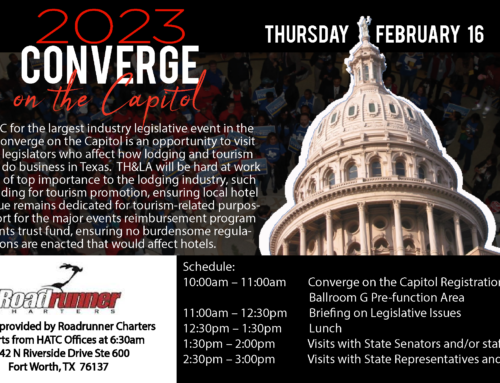Healthcare Reform: Law summary
Basics
The new law will require most Americans to carry health insurance or pay a fine, beginning in 2014. The law offers tax credits to help low-income individuals to buy coverage, and extends Medicare coverage to those earning up to 133% of the national poverty level ($14,404 for individuals, or $29,326 for families).
The law will create new State-based Internet marketplaces, or exchanges, where individuals can shop for healthcare insurance. Insurance companies will be prohibited from denying coverage based on pre-existing conditions. The exchanges will have to meet certain “Qualified Health Benefit Plan” criteria.
The law does not require healthcare coverage to be provided by employers, but it does impose tax penalties on employers who have over 50 employees and do not provide a minimum level of health care coverage. Employers with over 50 full-time employees (30 hours and above) would pay $167/month for each employee unless they offer coverage or have no employees who receive a tax credit. Employers with over 50 full-time employees who offer coverage but a cost that qualifies an employee for government assistance would be assessed a penalty equal to the lesser of $250 a month times the number of employees qualifying for assistance. The fees would not be deductable.
Many individuals will receive purchasing help from the government through sliding-scale tax credits that should cover much of the premium’s cost. Small businesses under 25 employees would get full or partial tax credits to help them purchase insurance coverage for their employees.
The law prohibits insurance companies from rescinding coverage from enrollees once they have been covered. Health plans must sell insurance to anyone who wishes to purchase it, including those with pre-existing medical conditions. Dependent children can remain on their parent’s coverage until age 26. All existing insurance plans would be barred from imposing lifetime limits on coverage. Insurers can no longer retroactively cancel an individual’s insurance except for fraud.
Penalties
The individual penalty for not purchasing insurance would start at $95, or up to 1% of income, whichever is greater, and rise to $695 or 2.5% of income by 2016. Families would have a penalty limit of $2,085. Low-income individuals will receive assistance either through Medicaid or a government subsidy. The law includes certain grandfathered provisions that allow individuals to keep their current health coverage.
Companies with more than 50 employees that do not offer affordable insurance coverage would have to pay a $2,000 fine for every person they employ if at least one worker receives coverage through the exchange. The penalty would be based on the number of full-time employees, which the legislation defines as an employee who is employed on average of at least 30 hours a week.
Companies with fewer than 50 employees will not face any penalties if they don’t offer health insurance. Companies can qualify for tax credits to help buy insurance if they have 25 or fewer employees and a workforce with an average wage of up to $50,000. Tax credits of up to 35% of the cost of premiums will be available in 2010 and the credits are scheduled to grow to 50% by 2014.
Financing
The law will pay for these expanded benefits through a 0.9% increase in the Medicare payroll tax, a 0.5% in FICA payroll taxes, and a 40% tax on high-cost (“Cadillac”) plans. The 40% excise tax would be imposed on insurers of employer-sponsored health plans whose aggregate indexed values exceed $8,500 for individual coverage and $23,000 for family coverage.
Pharmaceutical companies, medical device manufacturers, and insurance companies are taxed to help pay for financial aid for those who cannot afford insurance or do not have it through their workplace.
Taxes will be newly imposed on single taxpayers with income over $200,000/year and couples filing jointly with incomes in excess of $250,000/year. A 3.8% Medicare tax is also imposed on these individuals for unearned income such as interest and dividends.
The tax on distribution from Health Savings Accounts (HSA) or a Medical Savings Account (MSA) not used for qualified medical expenses would be increased to 20% of the disbursed amount.
The amount of contributions to a flexible spending account (FSA) for medical expenses would be limited to $2,500, adjusted for inflation, beginning in 2013.
A $2.3 billion annual fee on the pharmaceutical manufacturing industry, a $2 billion annual fee on medical device manufactures, an annual fee for health insurers based on their market share, and a 10% tax on indoor tanning service businesses will also help finance the cost.
HEALTHCARE REFORM: Frequently Asked Questions (FAQ)
Q: When does this law take effect?
A: Several key provisions begin in 2010, while most of the provisions affecting employers begin in 2014.
Q. What is a “Full Time Equivalent”?
A. A full-time employee is one who works 30 or more hours plus a threshold based on the following formula that will need to be calculated on a monthly basis:
___ Number of full-time employees (defined as those who average 30+ hours a week for that month)
+ ___ All hours worked by part-time employees that month ÷ 120 hours
= ___ Number of full-time equivalents.
Q: Will I be required to provide health care for my hotel employees?
A: That depends upon the size of your business. If you have over 200 employees you will be required to provide coverage to all full time employees. If you have 50 or more full-time equivalent employees you will be required to provide employees with “minimum essential coverage” or pay a penalty. If you have fewer than 50 employees, you are not required to provide coverage but might be eligible for a tax credit if you do.
Q: What are the penalties if I choose not to provide coverage?
A: If you have 50 or more full time equivalents and do not provide coverage, you will be required to pay a $2,000 per employee fee minus 30. For example, if you have 70 full time employees and do not provide coverage, your penalty will be $80,000 (70 – 30 = 40 times $2,000 = $80,000)
Q: Am I required to provide coverage for part-time employees?
A: No, you will need to count them to determine your “full time equivalents” but you are not required to provide coverage.
Q: What is the “minimum essential coverage” my plan will have to provide?
A: That has yet to be fully defined by the Federal government. Covered employers will have to provide “minimum essential coverage” with at least a 60 percent actuarial value to meet the requirements of the law. The basis upon which the 60% is based will be defined through the regulatory process.
Q: Will all employees need to be provided coverage on first day for hire?
A: No, but starting in 2014 waiting periods cannot be longer than 90 days.
Q: Am I eligible for the small business tax credits?
A: In order to be a qualified employer, (1) the employer must have fewer than 25 full-time equivalent employees (“FTEs”) for the tax year, (2) the average annual wages of its employees for the year must be less than $50,000 per FTE, and (3) the employer must pay the premiums under a “qualifying arrangement.” Small employers that provide health care coverage to their employees and that meet certain requirements (“qualified employers”) generally are eligible for a Federal income tax credit for health insurance premiums they pay for certain employees. Visit this IRS Webpage for more information.
Q: If an employee works more than one job, which employer counts the hours?
A: Each employer would be required to count the employees’ hours in determining the full time equivalent.
Q: If both spouses work full time at different jobs, which employer is responsible for the employees hours?
A: Each employer would be responsible for their employees’ hours. Coverage is based on the individual, not the family





